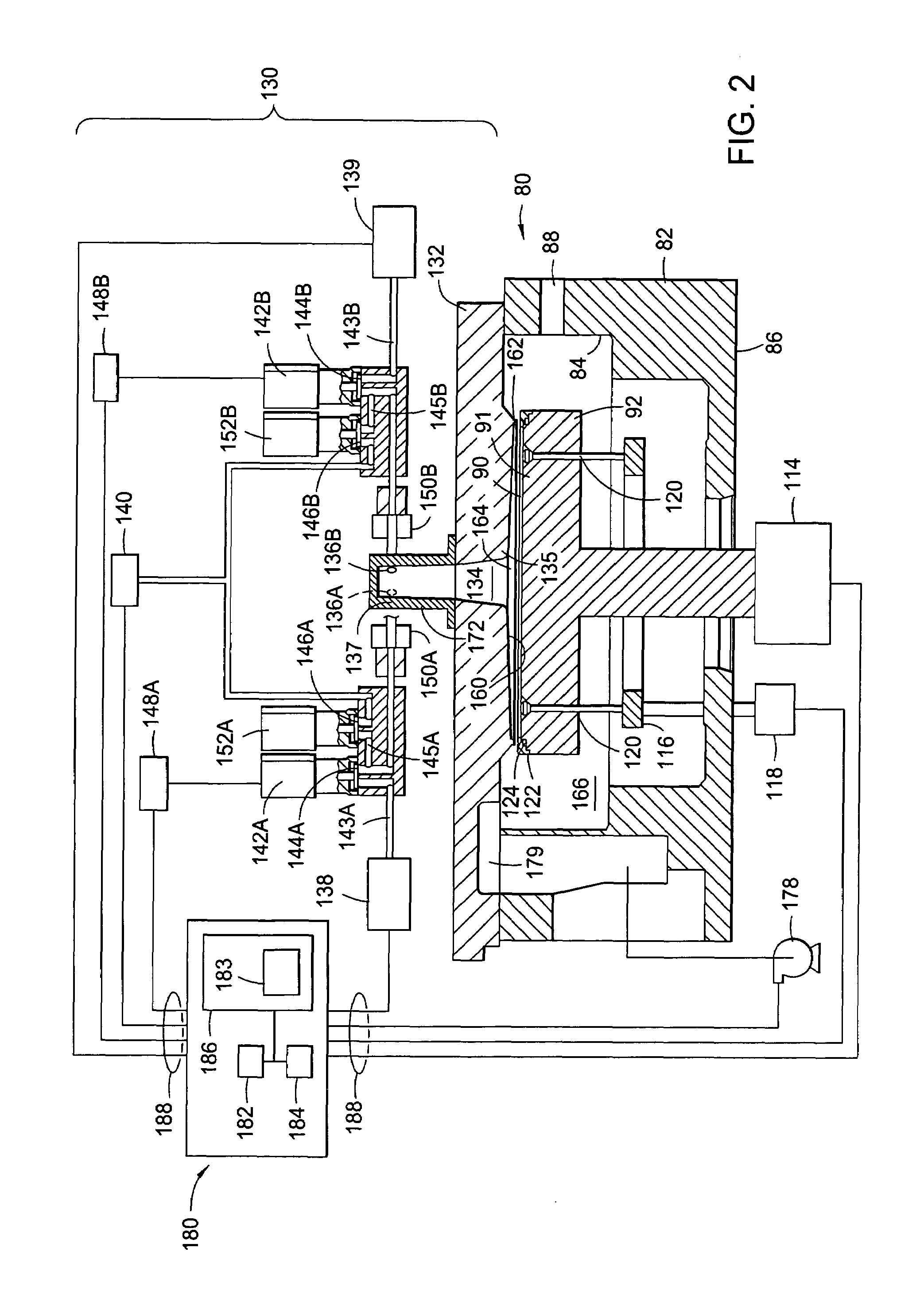Ruthenium layer formation for copper film deposition
a technology of ruthenium layer and copper film, which is applied in the direction of coating, chemical vapor deposition coating, material nanotechnology, etc., can solve the problems of increasing the current density of such feature, void formation in the conductor, and many conventional deposition processes that have difficulty filling structures
- Summary
- Abstract
- Description
- Claims
- Application Information
AI Technical Summary
Benefits of technology
Problems solved by technology
Method used
Image
Examples
Embodiment Construction
[0025]FIG. 1 depicts a schematic cross-sectional view of a process chamber 10 that can be used to perform integrated circuit fabrication in accordance with embodiments described herein. The process chamber 10 generally houses a substrate support pedestal 48, which is used to support a substrate (not shown). The substrate support pedestal 48 is movable in a vertical direction inside the process chamber 10 using a displacement mechanism 48A.
[0026]Depending on the specific process, the substrate can be heated to some desired temperature prior to or during deposition. For example, the substrate support pedestal 48 may be heated using an embedded heating element 52A. The substrate support pedestal 48 may be resistively heated by applying an electric current from an AC power supply 52 to the heating element 52A. The substrate (not shown) is, in turn, heated by the pedestal 48. Alternatively, the substrate support pedestal 48 may be heated using radiant heaters such as, for example, lamps ...
PUM
| Property | Measurement | Unit |
|---|---|---|
| pressure | aaaaa | aaaaa |
| temperature | aaaaa | aaaaa |
| thickness | aaaaa | aaaaa |
Abstract
Description
Claims
Application Information
 Login to View More
Login to View More - R&D
- Intellectual Property
- Life Sciences
- Materials
- Tech Scout
- Unparalleled Data Quality
- Higher Quality Content
- 60% Fewer Hallucinations
Browse by: Latest US Patents, China's latest patents, Technical Efficacy Thesaurus, Application Domain, Technology Topic, Popular Technical Reports.
© 2025 PatSnap. All rights reserved.Legal|Privacy policy|Modern Slavery Act Transparency Statement|Sitemap|About US| Contact US: help@patsnap.com



